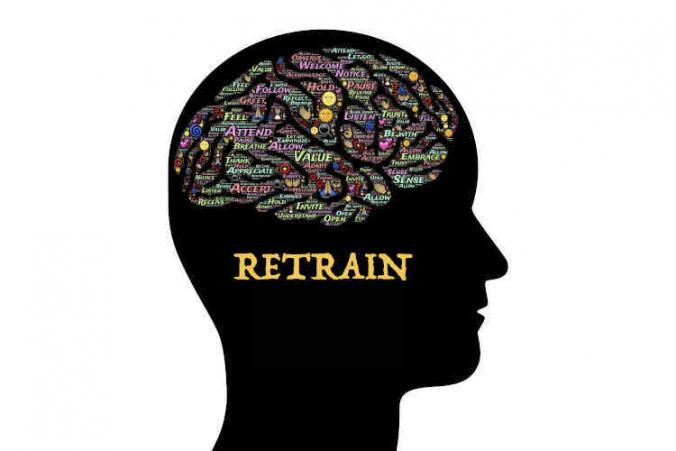Menu
Just Transition Insights, Issue #1, 10/17/2022
By Jonathan Tasini
|

Leading Off: Ten Markers For The Road
As this is the first issue of the newsletter, here are some markers that will inform our mission in the months and years to come.
Economic transitions are nothing new for workers. Century after century a new invention or industry upheaval has meant economic change. The transitions all have one thing in common: they are unequal. A few people get very rich and virtually everyone else gets hurt, especially a worker who loses a job or has pay and benefits cut because of the economic changes.
Transformation versus Reform: the climate emergency didn’t suddenly emerge as if by some environmental Immaculate Conception. It is a direct result of a specific economic model that has been dominant across the globe. So, while this project will engage with reform efforts, it will strongly advocate for a transformative vision, starting with energy equity but touching every aspect of the economy.
A “high bar” Just Transition—the bedrock principle of this project—is also smart economics. You don’t have to be a socialist to see the logic: people who lose incomes, and the communities in which they live, cannot pay bills or buy necessities of life, which, in turn, leads to depressed economic vitality.
Nobody really knows how many workers will be displaced. It’s a guess—often way off target if the math doesn’t include workers in secondary industries and workers who lose their jobs when communities shrivel up after a fossil-fuel related plant shuts down.
“Good jobs” promises are often False Gods. Workers are being told, by governments and even unions, that just over there, on the horizon, waits a Garden of Eden of “green jobs”. However, the landscape of “green jobs” is, to date, brimming with mostly lower-paying, non-union work, which means a “good job” in the meaning of a “high bar” economy is a mirage.
Retraining has been a big failure. The past fifty years of retraining promises is littered with under-funded, poorly conceived, badly-managed programs that have left huge numbers of workers without decent-paying work. Most policy makers promote retraining ideas completely divorced from the reality of job markets that offer low pay, minimal benefits in non-union settings.
Blue-Green alliances are vital—but stand on shaky ground. This is where transformation can be helpful because the broad constituency of Blue-Green alliances will benefit from a vision that advocates transforming the economy.
North versus the South. Just Transition risks mirroring the same planetary divide between the rich North and the poorer South: richer nations in the North begin with more social safety nets than the South. In turn, such a divide could inevitably lead to preserve the same negative economic model which encourages “green jobs”, via supply chains, to flow to lower-wage countries.
We have plenty of money. Even with the post-pandemic, bumpy, uneven “recovery”, and a looming global recession in 2023, the planet’s gross domestic product (GDP) will hit $120 trillion by 2030. Money is not the problem. Political will is the problem. As Oxfam showed in 2020, “The world’s 2,153 billionaires have more wealth than the 4.6 billion people who make up 60 percent of the planet’s population”. So, the true problem is the uneven distribution of money between countries of the North and South, and the gap between a handful of billionaires and most of humanity.
We can’t wait. To people who want to embrace a “high bar” Just Transition and think the problem can be pushed off until just before a mine or a plant shuts down: Wake up! The time to begin a Just Transition process is now.
SPONSOR MESSAGE
A message from the Australian Mining And Energy Union
We are fighting back, not just for ourselves but for the future generation of mineworkers. Workers deserve better. Our families and communities deserve better. Visit us
Spotlight: Job Retraining—Mirage or Real?
Our job here at Just Transition For All is, in part, to get beyond rhetoric and promises—if we are going to have a real debate about the future, let’s do it with actual facts.
Retraining is one of those wonderful sounding concepts. Many countries, and companies, make broad rhetorical commitments to “retrain” workers, and pledge to “empower” displaced workers with a suite of new skills to match new jobs.
Yet, in most countries we’ve looked at so far (and we will do a lot more coming up) there is no history or infrastructure of vocational retraining programs.
And, where retraining programs exist, they have a thin record of success—and most have been failures.
In North America, retraining has a dismal track record. Canada doesn’t have a coherent vocational training system, which currently “is a confusing patchwork of private and public programs, with little effective guidance offered to workers on what specific jobs to train or search for, and a federal Canada Training Credit that is largely insufficient to provide workers with the guidance or funding necessary to seek effective training”, according to Unifor, Canada’s largest private sector union.
You can’t afford to even be retrained. Canada offers a miserly $250 CAN in tuition credit every year, up to a maximum of $5,000 in a lifetime, which would equate to a 20-year period to reach the maximum benefit; during the training period, a worker can only get our week of employment insurance.
The U.S. has poured billions of dollars into retraining over the past several decades, either as part of retrenchment of the defense industry in the post Cold War-era or as part of trade agreement-related industrial support for workers whose jobs were eliminated due to foreign competition. But, the programs were inadequate to the task, and principally deployed for political motivations, without any solid economic underpinnings. Such programs existed as if the real world of weak unions are weak and low-paying, Wal-Mart-type jobs did not exist. In most coal-producing communities, a coal-related job –which had middle-class-level basic standards of pay, benefits and retirement forged through decades of collective—was likely to be replaced with a new job at lower pay, rudimentary health care coverage and, if any, a flimsy pension.
Retraining, as a whole, failed workers and communities, and its current model still extends false promises of a high-wage job waiting at the end of the retraining rainbow in the “green jobs economy” whose industries are made up of mostly non-union companies.
This is the story in virtually every part of the globe. Part of the failure of retraining is inherent in the poor management of the programs, from conception to implementation. More important, even in the best circumstances where a worker acquires new, marketable skills for “green jobs” or other jobs, workers face the Redcar phenomena: declining union density that translates into poorly-paid, insecure work.
The conclusion is straightforward: any retraining embedded in a Just Transition plan must be solidly connected to a plan to radically shift the market forces existing in today’s economy. Central to such a plan must be an enforceable drive to implement livable wage floors in every country—and, by extension, rid supply chains of forced labor and slavery—and embed strong union organizing and collective bargaining provisions in national laws.
Otherwise, a worker leaving a retraining program, with a graduation certificate in hand, will be entering a job market offering lower wages, threadbare benefits and less security.
Ideas: Global Just Transition For All Fund
Let’s be honest: the vast majority of countries cannot underwrite a transformational Just Transition. To mention just a few, Lebanon, Bangladesh, Sri Lanka and a large tract of sub-Sahara are already in the grips of economic deprivation. The COVID-19 pandemic spotlighted the lack of fiscal muscle plaguing poor countries: lacking resources, many countries suffered high rates of infection, sickness and death because of a lack of purchasing power for vaccines and/or an existing fragile health system unable to cope with surges in the original COVID and its subsequent variants. Those same countries also bore the brunt of COVID-19 entire shutdowns of sectors of the economy that produce goods for global commerce, further draining capital from national treasuries, stunting societal responses to the pandemic.
On the other hand, the COVID pandemic did open up a much broader conversation about marketplace interventions, unleashing governments, and central banks (principally, the U.S. Federal Reserve Bank, the European Central Bank and the Deutsche Bundesbank) to take fiscal actions to prop up economies when nation after nation had to close down economic activity to battle the pandemic.
Trillions of dollars and euros flowed into the global economy on a time frame and scale not seen before—within months, not years. Generally speaking, broadly embraced across the political spectrum and in financial markets, leading some analysts to consider whether the shape of the welfare state had been permanently altered. In just one year, countries poured $13.8 trillion (13.5 percent of global Gross Domestic Product) of economic stimulus and support—exceeding by a factor of four the 2008 Great Recession global stimulus.
For society-wide challenges, leaving our fates to markets and a hands-off, shrunken government and embracing “inclusive capitalism” has disastrous consequences for people and the planet. At the same time, people have experienced what effective, expansive government intervention and action can do in the midst of a massive crisis.
Just Transition, then, in a world torn by a pandemic, should build upon the mindset that large-scale financial support, coordinated and disbursed by governments, is central to moving the planet to sustainability, and should be carried out without hollowing out the livelihoods of millions of workers—millions of whom live untenable economic existences with no safety net.
So, Just Transition For All is proposing a global international Just Transition fund, which we will call, for now, Global Just Transition For All fund (GJTFA). [Yes, we hate acronyms, especially lame ones].
The JTFA will work on three levels:
- First, fund regional projects to extend support for affected workers and communities where energy-intensive sectors are hemorrhaging jobs.
- Second, on a national systemic level, funds will be invested to combat energy poverty and underwrite long-term campaigns to ignite energy system transformation.
- Third, raise living standards by promulgating living wages and collective bargaining rights.
Models exist already for such an initiative. Throughout the world, “green” development banks are emerging to underwrite hard-to-finance transition projects, especially those in the under $10 million USD range. In Scotland, the Scottish National Investment Bank was set up in November 2020 to “invest where the private sector is not providing sufficient investment to businesses or projects that support the development of a country’s economy.”[1] Development banks exist in a number of G-20 countries.
Here are our basic guidelines now under development:
- The GJTFA should have the same global authority as the World Trade Organization, and, thus, be an institution with enforcement powers.
- The GJTFA will be financed by annual contributions from the wealthiest nations and a targeted global carbon tax.
- Similar to facilities such as the International Monetary Fund’s Special Drawing Rights, the Fund will be co-directed by diverse representatives of relevant trade union organizations and community leaders.
- It will disperse Just Transition funds to accomplish the goals of a high-bar transition with a priority given to countries with demonstrable economic challenges.
- The money will only be dispersed to countries adhering to, or adopting, living wage commitments and full, enforceable union organizing and collective bargaining rights.
The difference with existing multi-lateral institutions and NGOs is that the JTFA will only include representatives of businesses in an observer/advisory capacity; business will not serve in the highest decision-making levels, especially when it comes to allocating funds.
While a tri-partite system—involving government, labor and companies—was a preferred structure in the past in other fora, the JTFA’s agenda, almost by definition, demands limiting decision-makers to constituencies committed to transformation, not reform of the current economic system.
This should not be controversial: The globe is replete with cross-border financial institutional governing structures operating without direct corporate participation. The Nordic Investment Bank, for example, is governed by representatives of its eight-member countries: Denmark, Finland, Iceland, Norway, Sweden, Estonia, Latvia and Lithuania. Indeed, barriers to a cross border financial institution—perhaps structured as a global “public bank”—are only political, not economic.
[1] https://www.thebank.scot/
Opinion: Hydrogen revolution has to start where we can afford it
By Tony Maher
Recently, Australia’s richest man – iron ore magnate Andrew ‘Twiggy’ Forrest – launched a bizarre attack on an innovative project in the Latrobe Valley producing hydrogen from brown coal. His impassioned denouncement this week of all hydrogen derived from coal was an oddly loose contribution to the energy debate – even accounting for Twiggy’s taste for vaudeville.
We fully support the project as an important step in building a hydrogen industry.
In calling on the Australian Government to abandon support of all forms of hydrogen extraction that don’t align with Fortescue’s new green hydrogen investments, Mr Forrest suggested that using “decaying swamp matter” (aka coal) to extract the gas would cause Australians to look like “zero-IQ idiots” and constitute a “cringe-inducing backwards shuffle into the dark ages.”
It never fails to surprise me how quickly the energy discussion seems to ramp up into hyperbolic moral declarations of pure good and evil. In my experience, it’s generally useful to contrast rhetorical flourishes with facts.
Hydrogen, which produces zero carbon emissions when burnt, can be produced in a number of ways.
The most common and cheapest type of hydrogen we have now is generally known as “grey hydrogen.” It is made from methane – natural gas. The next cheapest is often referred to as “brown hydrogen” and is made from oil or coal.
Producing hydrogen this way creates carbon dioxide. This is why there has been so much investment in CCS (carbon capture and storage) technology to prevent emissions from entering the atmosphere. The results get called “blue hydrogen”, and this is what’s being piloted in a $500m project in the Latrobe Valley to generate hydrogen from the region’s abundant brown coal resources.
Mr Forrest is keen to write CCS off entirely based on the fact that Chevron’s Gorgon CCS project has only managed to store a million tonnes a year of CO2, instead of the four million tonnes it projected.
I don’t think such blunt dismissal is warranted. New technology takes time and investment to develop. All the indicators are that the Latrobe Valley initiative will successfully store CO2 deep underground in the Gippsland Basin.
Mr Forrest argues such projects should be abandoned in favour of “green hydrogen,” produced by pumping enormous quantities of renewable energy into water and splitting its molecules. The problem is that green hydrogen is nowhere remotely close to economic – costing well over US$8 per kilogram, many times the cost of grey hydrogen. So presumably Mr Forrest would like us to offer green hydrogen technology more patience than he is prepared to grant CCS.
Hydrogen has a range of exciting potential applications. You most commonly hear about it as a back-up to renewables, to keep electricity flowing when the sun doesn’t shine and the wind doesn’t blow. However, it has applications much closer to home for Mr Forrest, because it can potentially be used to replace the coking coal used to turn iron ore – which has made Twiggy the richest man in Australia – into steel.
Now, the gap between the cost of using coking coal to make steel and hydrogen is vast and will remain so for a long time. But given that in FY20 alone the manufacture of steel in China with Fortescue’s iron ore caused 241 million tonnes of carbon emissions – more than all the combined annual emissions of Australia’s export thermal coal sector – you would think Mr Forrest may be more open-minded about efforts to progress the hydrogen industry.
Waiting for Fortescue’s “green hydrogen” initiatives to become viable could take an extremely long time, presuming they ever come to fruition at all.
This is not to criticise green hydrogen itself. Technology will advance and it will play a role in the future. The question is how best to get there.
We could wait patiently for Twiggy to deliver on the quantum leap he promises. Or we could heed the more pragmatic advice issued recently by Blackrock CEO Larry Fink in his annual letter to CEOs in which he noted “we need to pass through shades of brown to shades of green.”
I would argue that you can’t create a hydrogen economy without supplying affordable hydrogen. We need cheap hydrogen to start with and brown coal is the most cost-effective feedstock. The idea of the Japanese pilot project in the Latrobe Valley is to try producing and transporting affordable hydrogen. It is testing whether we can manufacture hydrogen, store it, truck it to Port Hastings, chill it to -253 degrees, and put in on boats. Can the Japanese then ship it internationally and build and run plants that burn hydrogen safely and economically? Does the whole complex process work? It will be one of many pilot projects to solve these and a host of other challenges.
I think the arrival of the Japanese vessel Suiso – the world’s first carrier of liquified hydrogen – in Port Hastings to pick up its first shipment from the Latrobe Valley pilot plant is an exciting development and Australia can be proud to be involved. At the same time as preparing for our future energy needs, the project is creating jobs, economic activity and hope for the future in the Latrobe Valley, a region bearing the brunt of structural change in the domestic power market.
Developing a hydrogen economy will take decades. Anyone interested in practical advances should support starting now with affordable, available technology.
Maher is the General President of Australia’s Mining and Energy Union, which is also a sponsor of the Just Transition For All project.
Links
U.S.: A coalition of groups formed a “GND Champions” effort to pressure candidates and members of Congress to support climate change legislation, including a bill to guarantee the right to a good, union job.
Table of Contents
Leading Off
Ten Markers For The Road
Spotlight
Job Retraining—Mirage or Real?
Ideas
Global Just Transition For All Fund
Opinion
Hydrogen Revolution Has To Start Where We Can Afford It
Links
This Week's Links
Can’t wait to subscribe to the newsletter?
*We post information pursuant to the U.S. Fair Use Doctrine, and applicable international standards, in order to advance the knowledge base and education of our global audience. We endeavor to include the original link to documents. However, upon requests of original authors of posted documents, where explicit use permission is not granted, we will remove documents if it is determined continued use is not appropriate. We also reserve the full right to not include, or remove, any data inconsistent with our mission.

















